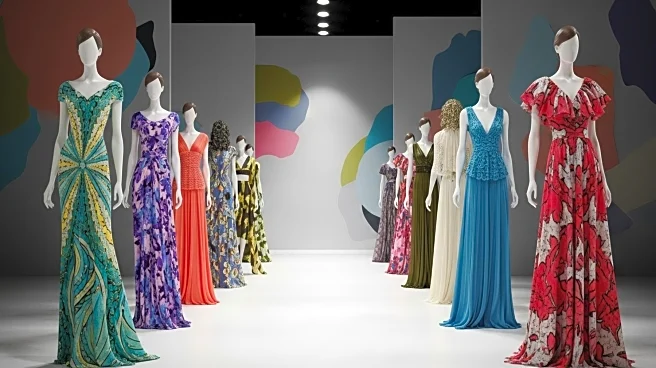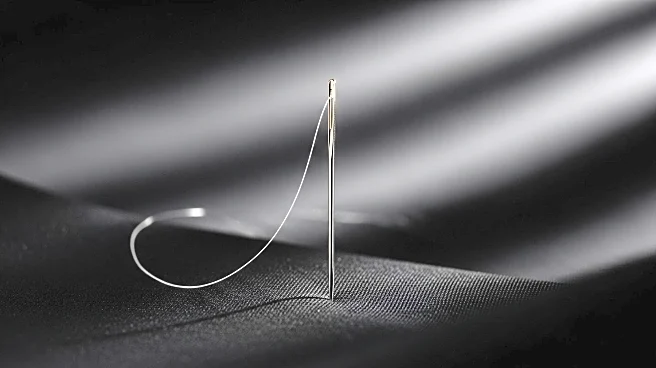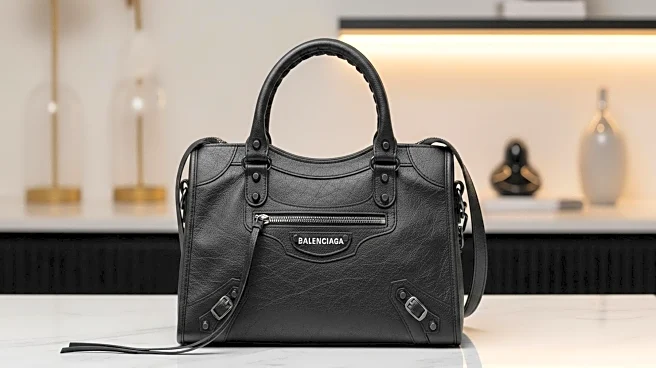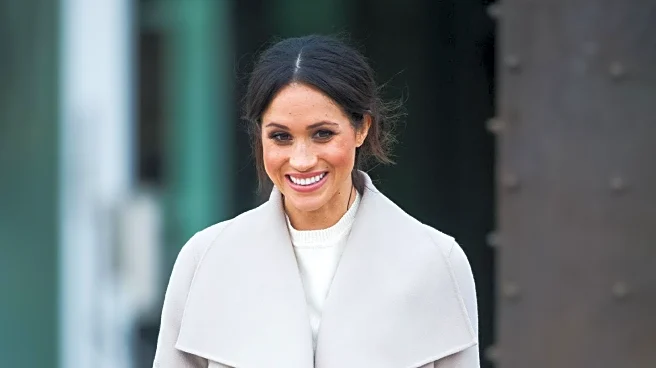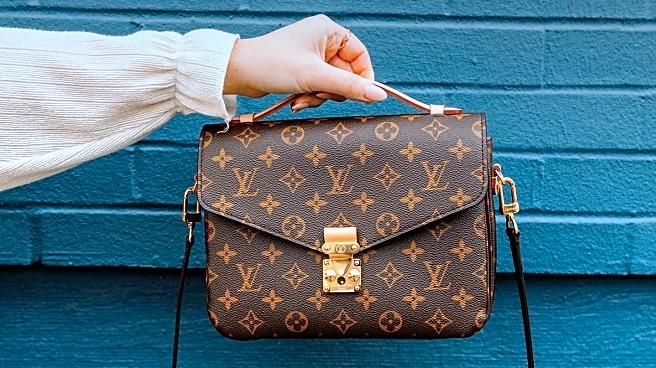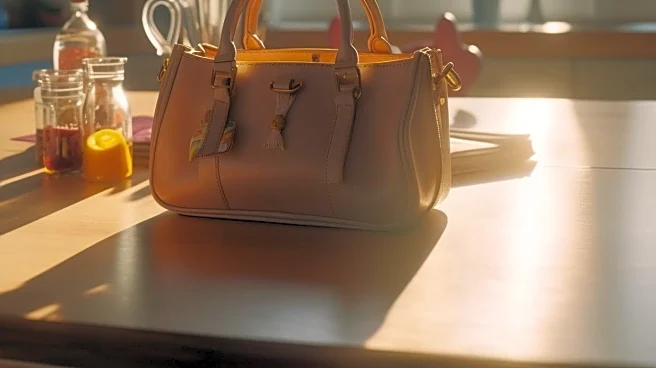What's Happening?
Pierpaolo Piccioli has made a notable return to the fashion scene with his debut collection for Balenciaga, showcased at the brand's headquarters. Known for his previous work at Valentino, Piccioli brings his signature style of couture volumes, vibrant colors, and precise tailoring to Balenciaga. His inspiration for the collection stems from Cristobal Balenciaga's 1957 Sack Dress, which was revolutionary for its simplicity during an era dominated by the corseted Christian Dior New Look. Piccioli's collection features a range of designs, including a long black V-neck evening dress, balloon skirts, and a vivid red one-shouldered dress. The collection also pays homage to previous Balenciaga designers like Demna and Nicolas Ghesquière, incorporating elements such as conceptual riding hats and oversized shirts.
Why It's Important?
Piccioli's debut at Balenciaga marks a significant moment in the fashion industry, as it signals a potential shift away from streetwear towards more sophisticated and elegant designs. This change could influence fashion trends and consumer preferences, impacting luxury fashion retailers and designers. The collection's emphasis on radical simplicity and elegance may attract a more mature audience, potentially expanding Balenciaga's customer base. Additionally, Piccioli's ability to blend historical inspiration with modern design could set a new standard for high fashion, encouraging other designers to explore similar themes.
What's Next?
The fashion industry will be closely watching how Piccioli's collection is received by consumers and critics. If successful, it could lead to a broader trend of returning to more classic and refined styles in luxury fashion. Retailers and designers may also consider incorporating elements of radical simplicity into their future collections. Furthermore, Balenciaga's sales and brand image could see a positive impact if the collection resonates well with its target audience.
Beyond the Headlines
Piccioli's approach to design, focusing on the human element and the interplay of body, fabric, and air, highlights a deeper cultural shift towards valuing individuality and personal expression in fashion. This perspective may encourage a more inclusive and diverse representation in the industry, as designers seek to create pieces that resonate with a wider range of consumers. Additionally, the collection's success could inspire a reevaluation of the role of fashion in society, emphasizing its potential to empower and liberate individuals through style.

